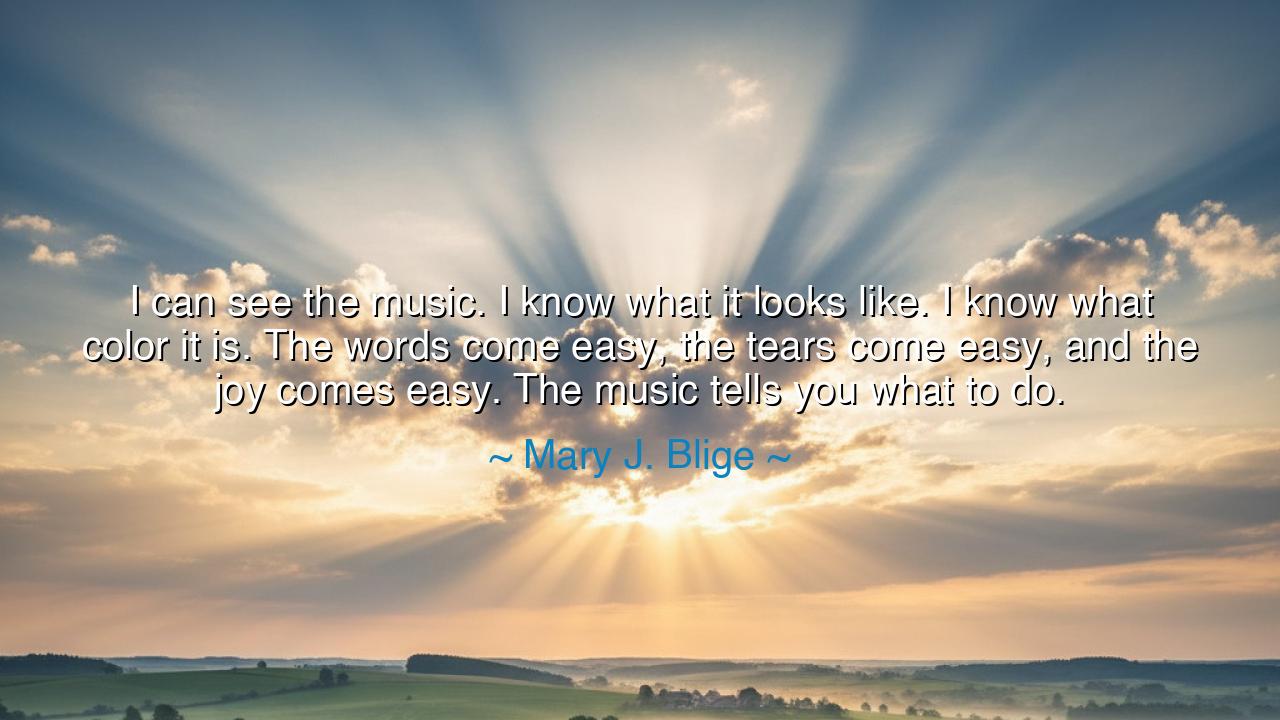
I can see the music. I know what it looks like. I know what
I can see the music. I know what it looks like. I know what color it is. The words come easy, the tears come easy, and the joy comes easy. The music tells you what to do.






Hear the words of Mary J. Blige, the queen of soul and truth, who declared: “I can see the music. I know what it looks like. I know what color it is. The words come easy, the tears come easy, and the joy comes easy. The music tells you what to do.” In these words, she unveils the mystery of art as revelation. For to her, music is not merely sound, but vision, a force that carries form and color, sorrow and joy, command and guidance. It is not she who rules the song, but the song that rules her, whispering where to go, what to say, and how to feel.
The ancients understood this sacred relationship. They spoke of the Muses, divine daughters of memory, who gave poets and musicians their gifts. Homer did not boast of inventing the epic; he invoked the Muse, asking her to sing through him. The prophet of Israel did not claim to compose alone, but said, “The Spirit of the Lord spoke through me, His word was on my tongue.” So too does Blige confess that the music tells you what to do, that true artistry is not invention alone but surrender to something greater.
Consider the life of Ludwig van Beethoven. As deafness consumed him, he could not hear the notes with his ear, yet he saw the music in visions, in colors, in thunderous images that burned within him. The Ninth Symphony, composed in silence, was not heard by him in sound but felt in spirit. Like Blige, Beethoven reveals that music is more than vibration—it is truth clothed in shape and color, a living force that commands the artist.
And notice the balance in her words: the tears come easy, but so too does the joy. Here lies the dual power of art: to wound and to heal, to break and to restore. Blige, whose own life carried hardship and pain, testifies that music becomes the vessel through which sorrow transforms into beauty. She does not force the song—it carries her, as a river carries a boat. This is why she calls it both vision and command: the artist must listen, not only create.
The teaching is clear: true artistry requires surrender. To be guided by music, by inspiration, by vision, is to admit that the highest truths cannot be forced by will alone. They arrive as gifts, sudden and mysterious, demanding only that the artist be open, ready, and faithful. The ego says, “I control.” But the soul says, “I receive.” In this, Blige teaches not only singers, but all people: in every life, there comes a time when wisdom flows not from force, but from listening deeply to the voice that rises within.
Practical wisdom follows: when you create, or when you live, do not silence the voice of inspiration. If you feel sorrow, let it speak; if you feel joy, let it dance. Do not resist the tears when they come, nor hide the laughter when it bursts forth. Keep a journal, a song, or even silence in which the voice of your inner music may be heard. For each person, though not all are singers, has a song within them, waiting to guide.
So let the words of Mary J. Blige resound as eternal truth: “I can see the music… the music tells you what to do.” This is the mystery of creation, the harmony of surrender and strength. When you listen, you will see your own life take shape in colors, in rhythm, in stories that move others as they have moved you. Let the music guide you—not only the music of sound, but the music of life itself. For those who listen, the tears will not destroy, the joy will not flee, and the path will always be clear.






AAdministratorAdministrator
Welcome, honored guests. Please leave a comment, we will respond soon